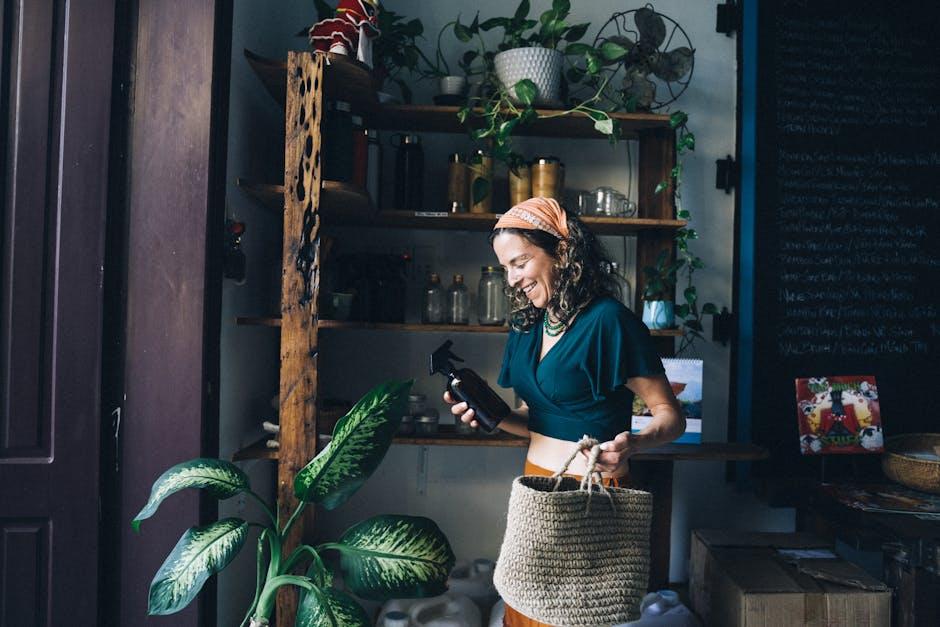In a world increasingly concerned with sustainability, the gardening community is blossoming with innovative solutions that make a difference.Among these, biodegradable plant pots have emerged as a compelling alternative to customary plastic containers, intertwining convenience with ecological duty. As more gardeners seek eco-friendly practices, these pots offer a seamless way to nurture plants while actively supporting the planet. In this article, we delve into the rise of biodegradable plant pots, exploring their benefits, the materials that comprise them, and how they pave the way for greener gardening. Join us as we uncover how a simple shift in planting containers can lead to a more sustainable future for our gardens and beyond.
Exploring the Benefits of Biodegradable Plant Pots for Sustainable Gardening
In an era where sustainability is at the forefront of environmental consciousness, adopting biodegradable plant pots emerges as a compelling choice for eco-friendly gardening. These innovative alternatives to traditional plastic pots are crafted from natural materials such as coconut coir, recycled paper, and compostable substances. Their ability to decompose naturally enriches the soil, thus promoting healthy plant growth while reducing plastic waste in landfills. Additionally, as these pots break down, they provide vital nutrients to the surrounding soil, enhancing its overall fertility and health without the need for synthetic fertilizers.
Furthermore, utilizing biodegradable plant pots can lead to a more seamless gardening experience. Home gardeners and professionals alike can benefit from their design,which allows roots to grow naturally without the restriction often found in plastic pots. This feature minimizes the risk of root bound issues and encourages robust, fuller root systems. The following table highlights the key advantages of switching to biodegradable options:
| Benefit | Description |
|---|---|
| Eco-Friendly | Break down naturally without harming the surroundings. |
| Soil Enrichment | Decomposes to add organic matter to the soil. |
| root Health | Allows for better air circulation and root growth. |
| Variety | Available in multiple shapes and sizes for various plants. |

Choosing the Right Materials: A Guide to Eco-Friendly Options
When exploring options for biodegradable plant pots, it’s essential to consider materials that not only support plant growth but also enhance environmental sustainability. Some popular eco-friendly materials include:
- Coconut Coir: Derived from the fibrous husk of coconuts, this material is renowned for its excellent drainage and aeration.
- Pulp Paper: Made from recycled paper, pulp pots break down easily and enrich the soil as they decompose.
- Compostable Bioplastics: These are made from plant-based components, ensuring that they degrade naturally without harming the ecosystem.
- Wood Fiber: A natural choice that offers durability and biodegradability, wooden pots lend a rustic charm to any garden.
Each of these materials has unique properties that cater to different gardening needs. For instance, coconut coir offers excellent moisture retention, making it ideal for tropical plants, while pulp paper pots provide a lightweight option for starting seedlings. To guide your choice, refer to the table below comparing key features:
| material | Drainage | Decomposition Time | Plant Compatibility |
|---|---|---|---|
| Coconut Coir | Excellent | 6-12 months | Tropical plants, herbs |
| Pulp Paper | Good | 3-6 months | Seedlings, annuals |
| Compostable Bioplastics | Variable | 1-2 years | Perennials |
| Wood Fiber | Good | 6-12 months | Vegetables, flowers |

Best Practices for Using Biodegradable Pots in Your Garden
When integrating biodegradable pots into your gardening practices,consider the following best practices to maximize their benefits and ensure plant health. First, select the right type of biodegradable pot for your specific plants. options include pots made from materials like peat, coconut coir, and paper, each offering unique properties regarding moisture retention and biodegradability. Additionally, monitor moisture levels closely; biodegradable pots can dry out more quickly than plastic pots, so it’s essential to maintain consistent watering. Their natural materials encourage even moisture distribution, but early-stage attention can prevent stress on young plants.
Another crucial consideration is the timing of potting. To ensure successful growth, plant seedlings in biodegradable pots close to their final location in the garden.This practice avoids disturbing the roots when transplanting, as the pot will decompose in the soil over time. It’s also beneficial to encourage biodiversity by combining various pot materials and plants, promoting a thriving ecosystem. Here’s a quick reference table to help you choose suitable biodegradable pots based on plant type:
| Plant type | Recommended Biodegradable Pot Material | Benefits |
|---|---|---|
| Seedlings | Peat Pots | Good moisture retention, easy to transplant |
| Herbs | Coconut Coir Pots | Excellent aeration, retains nutrients |
| Flowers | Paper Pots | Lightweight, holds shape while planting |

Innovative Designs and Brands Leading the Way in Green gardening Solutions
as the push for sustainability continues to gain momentum, a wave of innovative brands is redefining the gardening landscape with their eco-friendly solutions. One such standout is EcoPots, which has crafted a line of biodegradable plant pots using organic materials that break down naturally. This clever design not only supports plant growth but also enriches the soil as the pots decompose, eliminating the wasteful plastic commonly found in traditional gardening. Another brand, BioPlanter, takes this a step further by integrating seed-starting capabilities directly into their pots, allowing gardeners to seamlessly transition from pot to garden bed.
Leading this green revolution, companies like Plantable are innovating with their unique range of seed-infused pots. These innovative containers turn into fertilizer while providing a home for the seeds,creating a win-win for the environment. To illustrate the impact of these biodegradable options, consider the following table that compares traditional plant pots with their green alternatives:
| Feature | Traditional Pots | Biodegradable Pots |
|---|---|---|
| Material | Plastic | Organic compostable material |
| Decomposition | Hundreds of years | Within 1-3 years |
| Soil Enrichment | No | Yes |
| Impact on Environment | high | Low |
Concluding Remarks
the rise of biodegradable plant pots marks a significant stride towards sustainable gardening practices.As we cultivate our green spaces, choosing these eco-friendly alternatives not only benefits our plants but also protects the planet. By opting for biodegradable pots, we actively participate in closing the loop of nature, reducing waste, and nurturing a healthier environment for future generations. So, as you plan your next garden or embark on a new planting project, consider the impact of your choices. Together, we can sow the seeds of sustainability, cultivating a greener world one pot at a time. Embrace this change, and let your gardening journey be a testament to our shared commitment to a more sustainable future. Happy gardening!




